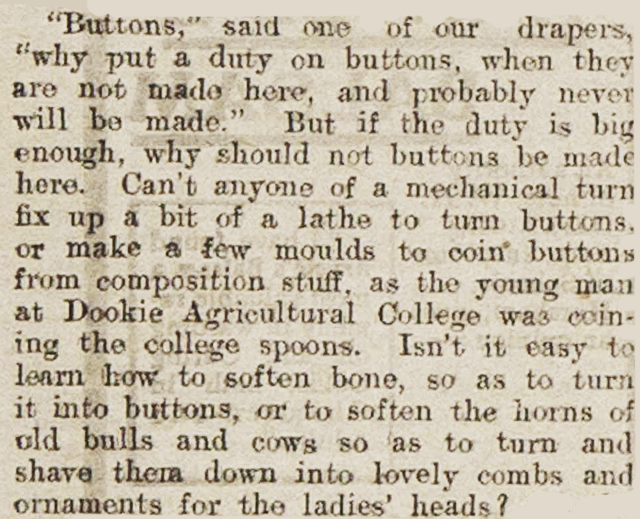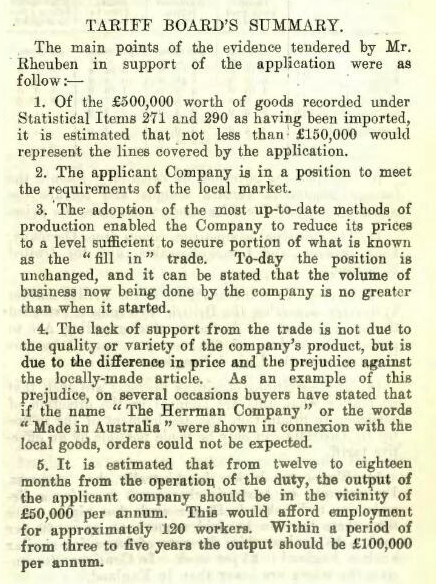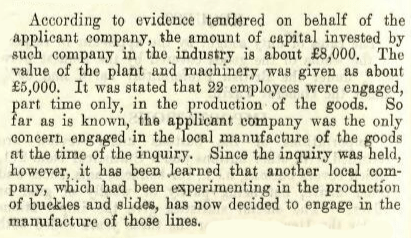Federation and Trade
Amongst the many changes and requirements of becoming a Federation, instead of separate competing colonies, was the establishment of import tariffs. One writer encouraged people to read the new tariffs, for many business opportunities lay within it.

The Bendigo Independent (Vic), 17th August 1907 page 3. I think he might have been on to something …
TARIFF REVISION REPORT AND RECOMMENDATION, 20TH FEBRUARY, 1931.

Sourced from Trove.
The applicant for the review of an increase in tariffs on imported buttons, buckles, clasps and slides of erinoid, celluloid, galalith or any casein material, was the Metal Trades Employers’ Association of New South Wales on behalf of the Herrman Company of Sydney.
Berthold Herrman had formed this company from a previous partnership in 1922. He sold the concern to two of his brothers-in-law, Otto Clyde and Percy Edmund Rheuben, in May 1927. In 1933 Otto renamed the company O.C. Rheuben & Co, which became General Plastics P/L in 1941. Otto appeared at this inquiry in 1930. He was requesting that the duties for the aforementioned buttons be increased to 45% for British (up from 0%), and 60% for non-British (up from 5-25%).

He believed he could greatly increase output, becoming more productive and bringing down local prices. It was hoped to increase the number of workers from 22 part-timers to 120 workers. He claimed that imported goods had already been dropped in price due to the competition his firm provided. The main importers were from Germany, Italy, France, Czecho-Slovakia and the United Kingdom. Wages were higher in Australia, e.g. £6 per week for a die-maker, compared with £3 per week in England. Casein for buttons was then being imported from England and German, but Rheuben suggested that increased local demand would lead to local production of casein. (This did happen during the 1930s.) He was also planning to manufacture ivory nut buttons:

Rheuben had hoped to start producing ivory nut buttons within 6 months of the introduction of the new duty. However, by 1938 this still had not happened as these buttons could be imported duty free from Britain.

Whoever the other ‘local company’ was, they must not have been successful.
The board suggested that as it could not be a commercial proposition to try to produce locally the wide possible range of items, the company should concentrate on lines for which there was high demand, rather than on high-end items. They felt a duty of 20% for British, and 30-40% for non-British was reasonable. This was an overall increase of 5-10% on previous duties.
If you wish to read the entire document (it is not very long), see:
For any comments or questions, please use the Contact page.
